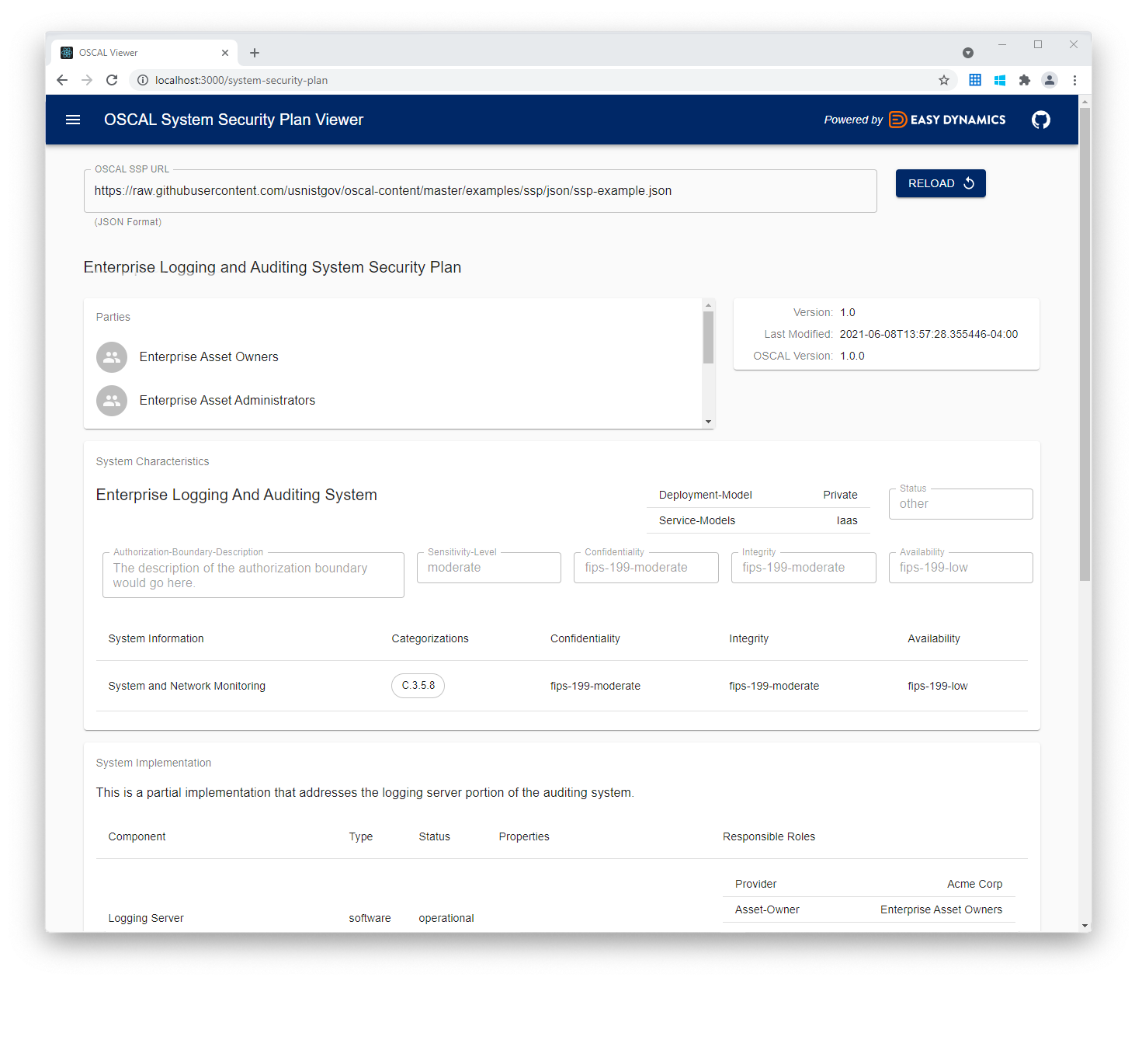A library of React components and an example application that provides a direct view into NIST's Open Security Controls Assessment Language (OSCAL) data in JSON format.
These components enable React application developers to quickly compose pages that display granular elements of OSCAL data or entire catalogs, profiles, component definitions, and system security plans.
 Take a tour with the live demo or learn more about
developing with the library below.
Take a tour with the live demo or learn more about
developing with the library below.
The library provides OSCAL UI developers a flexible framework for using OSCAL React components in their own applications.
Those components directly visualize granular elements of the OSCAL JSON format, allowing a developer to assemble them in the manner that best fits their application.
Documentation for the React components, as well as an editable mockup of each component, can be found on our Storybook page.
The example folder shows how those components can be assembled to create an OSCAL Viewer application.
In order to use the library components or test the library locally, the project components need to be rolled up and
dependencies need to be installed initially with the command: npm install. From here the application can be built
(See "OSCAL Viewer → Running") or components can be tested (See "Testing"). To automate local installation and
immediately run the application, use the following command:
npm run build-library-and-run-example
To run the test suite, ensure dependencies are installed and run npm run test. To also validate code is passing
eslint linting requirements, run npm run lint.
A component can be created and added to src/components. In order for the component to be used in an application,
it must either be added as an export in src/index.js or referenced by a component already being exported (such as
components being referenced by a loader in the current OSCAL Viewer). In the root folder of the project, run
npm start to roll up all of the components into dist/ making them accessible to the example application. NOTE:
npm install has the same effect and will build all dependencies.
The OSCAL Viewer example application allows developers to sample the various OSCAL concepts and view their features.
Once root dependencies are installed, build application dependencies and run OSCAL Viewer with the following command:
npm run build-and-run-example
After application dependencies are installed, use:
npm run run-example
For more details about OSCAL Viewer, please refer to the example (OSCAL Viewer) README.md.
For the process of Contributing to the project, please review CONTRIBUTING.md and adhere to the Code of Conduct.
For information on the project's license, please review the LICENSE file.